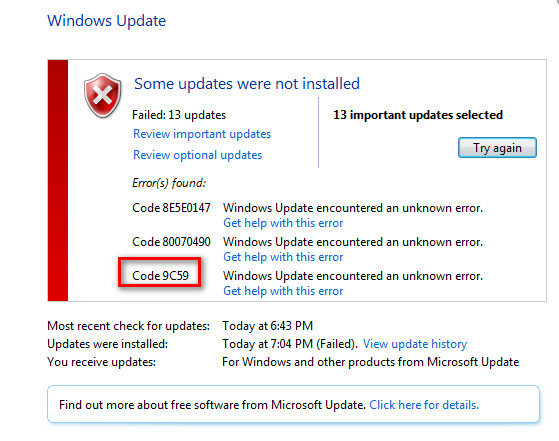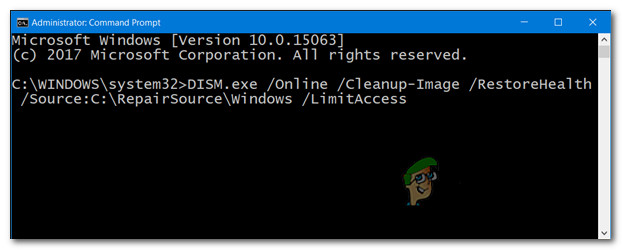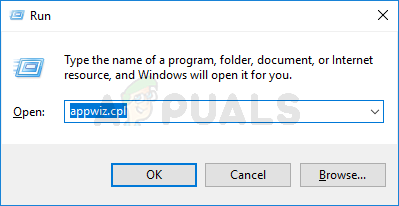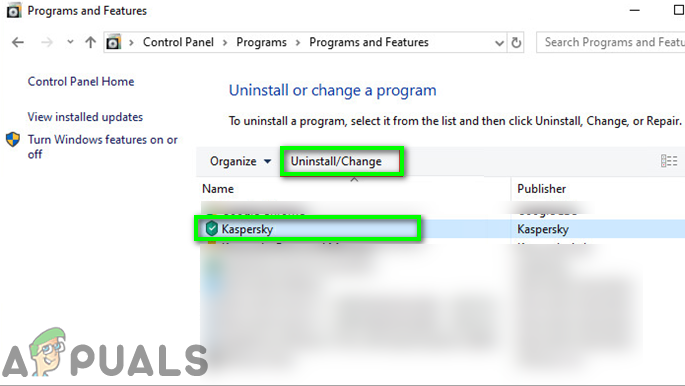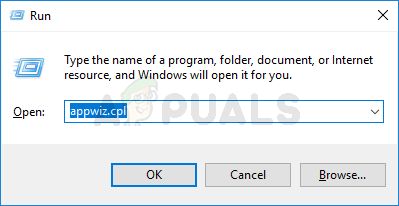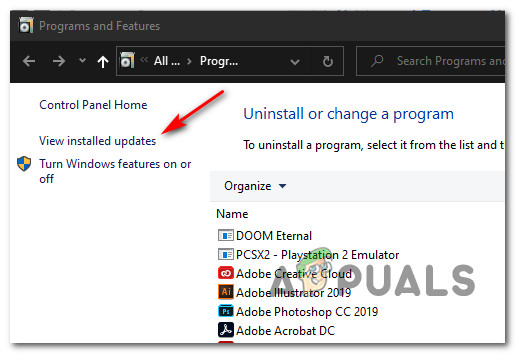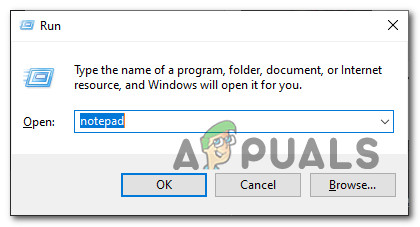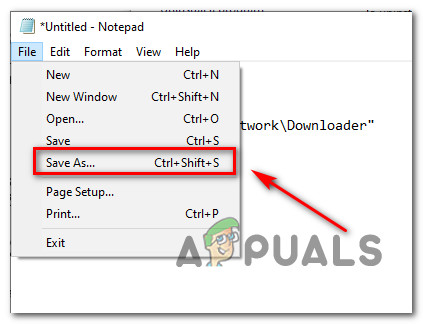After investigating this particular issue thoroughly, it turns out that there are several different instances that will cause this error code. Here’s a list of potential culprits that might be responsible for the apparition of this error code: Now that you’ve become familiar with every potential culprit that might be responsible for the apparition of the error code 9c59, here’s a list of methods that other affected users have successfully used to fix the problem:
Method 1: Running SFC and DISM scans
According to some affected users, this problem can also appear due to some kind of system file corruption that ends up affecting the Windows Update component. If you’re encountering the error code 9c59 with every new update that you’re attempting to install, you should take the time to run a couple of built-in utilities capable of fixing the most common causes of system file corruption. You can use SFC (System File Checker) and DISM (Deployment Image Servicing and Management) to effectively identify those corrupted files that are causing the problem and swiftly replace them with healthy equivalent. Keep in mind that even though these 2 utilities share a core similarity, the way they go about fixing these corrupted instances is fundamentally different. SFC uses a locally stored archive to replace corrupted instances with healthy equivalents while DISM uses a sub-component of Windows Update to download the ‘clean’ files. If you’re determined to try this method out, start by launching an SFC scan and wait to see if the scan manages to identify and fix any corrupted instances that might be causing the error code 9c59. Note: Once you launch this operation, DO NOT close the elevated CMD window or restart/shutdown your computer until the operation is complete. Once the SFC scan is completed, reboot your computer and wait for the next startup to complete. After your computer boots back up, start a DISM scan, and wait until the initial scan is complete. If the utility manages to find an underlying corrupted issue and is capable of fixing it, follow the on-screen prompts to replace corrupted files with healthy equivalents. Note: Before you launch this operation, it’s important to ensure that you have a stable Internet connection. Once the DISM scan is completed successfully, reboot your computer once again and see if the problem is fixed at the next computer startup. If the same problem is still occurring, move down to the next potential fix below.
Method 2: Installing IE 11 using the Offline installer (Windows 7 ONLY)
If you end up seeing the error code 9c59 when attempting to install or update IE 11 using the Windows Update component on Windows 7, it’s clear that Windows Update it’s running into some issues when tasked with doing this. In case you’re not in the mood to troubleshoot this issue until you manage to find the culprit, one quick fix that might allow you to update IE 11 without too much trouble is to use the Offline Installer. Several affected users have confirmed that they finally managed to avoid the apparition of this error by downloading the offline installer of Internet Explorer 11. If you haven’t tried this potential fix yet, follow the instructions below: If this method didn’t allow you to get past the 9c59 error code, move down to the next potential fix below.
Method 3: Solving a conflict with Kasperky AV (if applicable)
If you’re using Kaspersky as your active antivirus solution and you get the 9c59 error code while attempting to install or update an Internet Explorer 11 version, chances are you’re dealing with a fairly common culprit that’s being caused by the network agent component on Kasperky. Several affected users that found themselves in the same scenario have managed to fix this problem by removing the problematic 3rd party antivirus conventionally and then running a CMD command to effectively remove any trace of an old IE installation before re-trying the installation from scratch. If you’re looking for step-by-step instructions on how to do this, follow the steps below: If the same problem is still occurring after following the instructions above or this method wasn’t applicable, move down to the next potential fix below.
Method 4: Eliminating the most common roadblocks (Windows 7 PRO Only)
If you’re encountering this problem on Windows 7 PRO, you’re likely experiencing this issue due to some type of shared conflict between Internet Explorer 9 and a Network folder that holds read-only data that refuses to be modified in accordance with the dependencies needed by IE 11. Some users that found themselves in a similar scenario have reported that they were only able to fix the problem after completely uninstalling the IE 9 installation and creating a .bat file capable of flushing every piece of temp data that might cause problems when trying to install IE11. To make matters easier for you, we’ve put together a step by step guide through the whole thing: If the same problem is still occurring, move down to the next potential fix below.
Method 5: Repair installing / clean installing
In case none of the potential fixes above have worked for you, you should seriously start to consider the fact that you might be dealing with some type of system corruption that is severely affecting Windows Update – This is even more likely if you are encountering the 9c59 error code with every pending Windows Update that you are trying to install. If you find yourself in this scenario, the only repair avenues available to you are repair installing and clean installing. But keep in mind that in case you decide to go for a repair install (in-place repair), you’ll need to insert (or plugin) a compatible installation media. This should be the go-to approach if you have sensitive information on the C drive that you want to keep. On the other hand, if you’re looking for a quick and painless way of refreshing every Windows component that might be responsible for the apparition of this issue, clean installing is the best choice since you’ll be able to start it directly from the GUI menu of Windows (a compatible installation media is not required).
Fix: Windows Update Error “We Couldn’t Connect to the Update Service”[SOLVED] One of the Update Services is not Running Properly in Windows UpdateLast Free Update For Windows 7 Released, KB4534310 And KB45343140 Are The Final…How to Update the Windows Update Agent to the Latest Version
